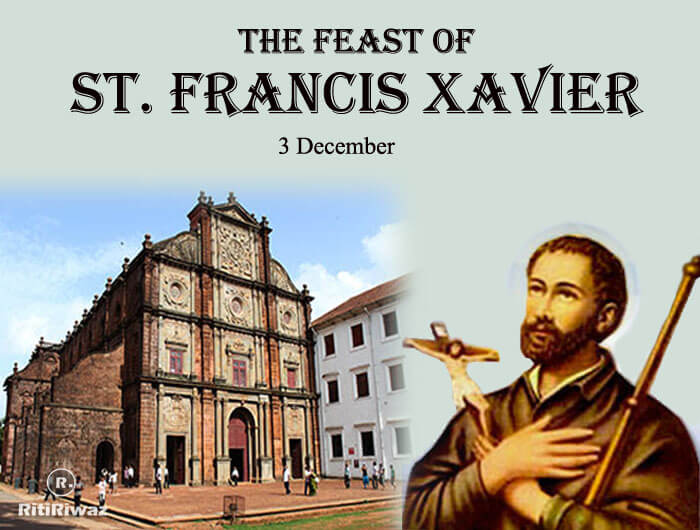The Feast of St. Francis Xavier

The Feast of St. Francis Xavier ( Goincho Saib or the Lord of Goa) is celebrated in Goa on 3rd December at the beginning of Advent. The date commemorates the death of St. Francis Xavier, patron saint of Goa. In Goa, his mausoleum was erected in the Basilica of Bom Jesus church and the mortal remains were kept inside in a silver casket.
It is one of the most prestigious Christian festivals in Goa, the feast is celebrated with large-scale festivities and fun events spread over a period of nine days. The celebration draws a large number of Goans and pilgrims also come from different corners of the world to pay their respect to the saint and enjoy the festivities.
St. Francis Xavier
St. Francis Xavier was the Jesuit missionary who preached the Catholic faith and won many converts in India and Japan in a mission lasting just ten years. He was born in Navarre, Spain, on April 7, 1506. After completing studies in Spain, he traveled to Paris in 1525 at age 19, where he entered the Collège de Sainte-Barbe and befriended Peter Faber and Ignatius Loyola. Ignatius soon won the confidence of the two men, and both Faber and Xavier offered themselves to the formation of the Society of Jesus.
After completing his studies in Paris and teaching there for some time, Xavier left the city with his companions in 1536, traveling to Venice, where he attended to the sick in hospitals.
In April 1541, he sailed to India on a dangerous voyage, landing at Goa in May 1542. He spent the first five months preaching and ministering to the sick. He would go through the streets ringing a bell, inviting children to hear the word of God and explaining the catechism to them. Francis knew that actions speak louder than words, so he did not only tell the people of India the message of the Gospels. He acted out this message by living, sleeping, eating, playing, and working among the poor.
In October 1542, he journeyed to the pearl fisheries on the southern coast, aiming to restore Christianity. Although introduced years before, Christianity had nearly disappeared there due to a lack of priests. He devoted almost three years to preaching to the people of Western India, converting many. He endured many hardships, including persecution at the hands of some of the kings in the country and some by Portuguese soldiers.
In the spring of 1545, Xavier traveled to Malacca in Malaysia, and in January 1546, to the Molucca Islands, where the Portuguese had some settlements. For a year and a half, he preached the Gospel to the inhabitants. By July 1547, he had returned to Malacca, where he met a Japanese man named Anjiro and learned about Japan, inspiring him to spread Christianity there.
However, the Society demanded his presence at Goa. During the six years that Xavier had been working elsewhere, other Jesuit missionaries had arrived at Goa, and in 1548, Xavier sent them across India, where he had established missions, to preserve and continue his work. He also established a novitiate and house of studies.
After working about two and a half years in Japan, he left the mission to Fr. de Torres and Br. Fernández, returning to Goa in 1552. Xavier then turned his thoughts to China and began planning an expedition there.
He left Goa in April 1552, arriving in autumn at the small island of Shangchuan, off the coast of China. Before reaching the mainland, however, he became ill and died on the island on Dec. 3, 1552.
He completed a staggering amount of missionary work in just 10 years — May 1542 to December 1552 — earning him the titles “Apostle of the Indies” and “Apostle of Japan.” He was canonized with St. Ignatius in 1622 by Pope Gregory XV and named the patron saint of all foreign missions by Pope Pius X.
